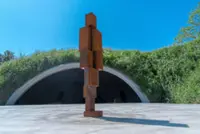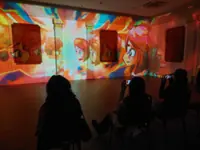This Ladybird Spider from East Kalimantan in Indonesia resembles a bright-coloured ladybird beetle. Photo: Chien C. Lee
Biologist-turned-photographer Chien C. Lee is fascinated by animal hide and seek and wishes he could have the camouflaging abilities of a leaf-tailed gecko.
This elusive forest-dwelling lizard from Madagascar blends in so well with its environment, thanks to its mottled pattern, that you wouldn’t even know it’s there.
Already a subscriber? Log in
Save 30% OFF The Star Digital Access
Cancel anytime. Ad-free. Unlimited access with perks.





